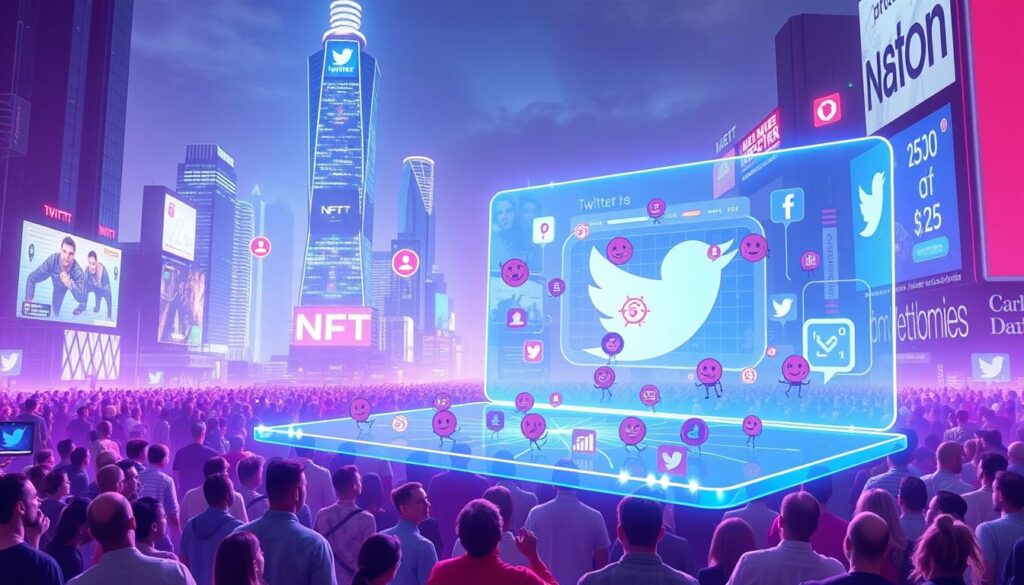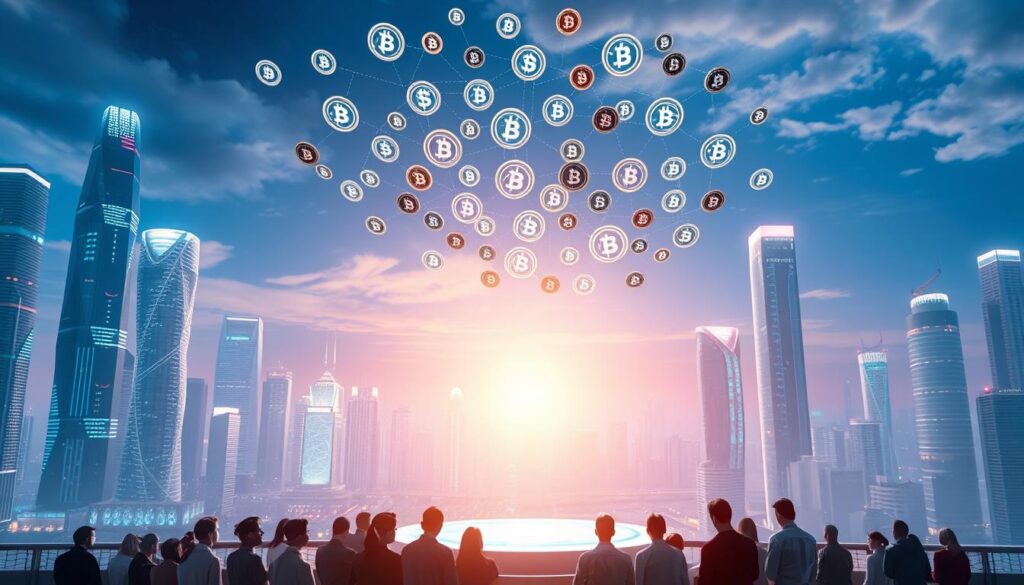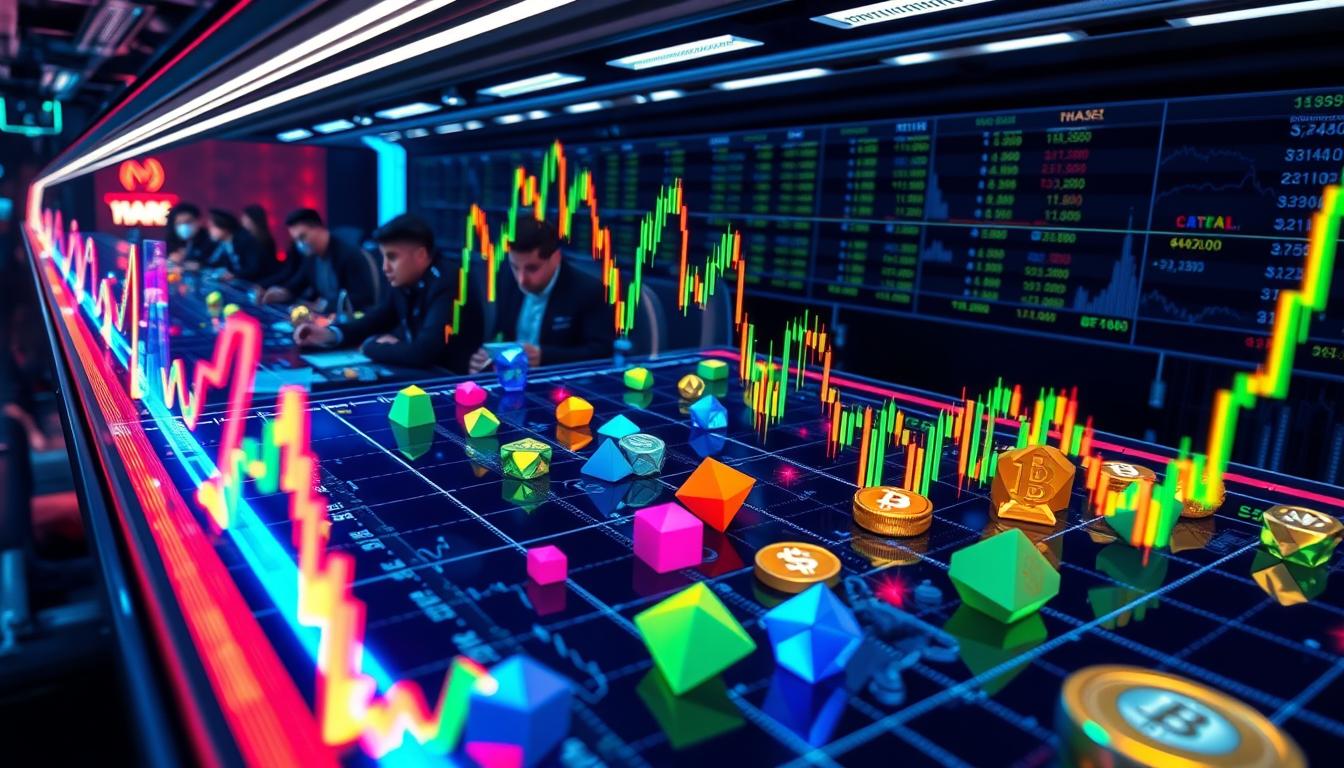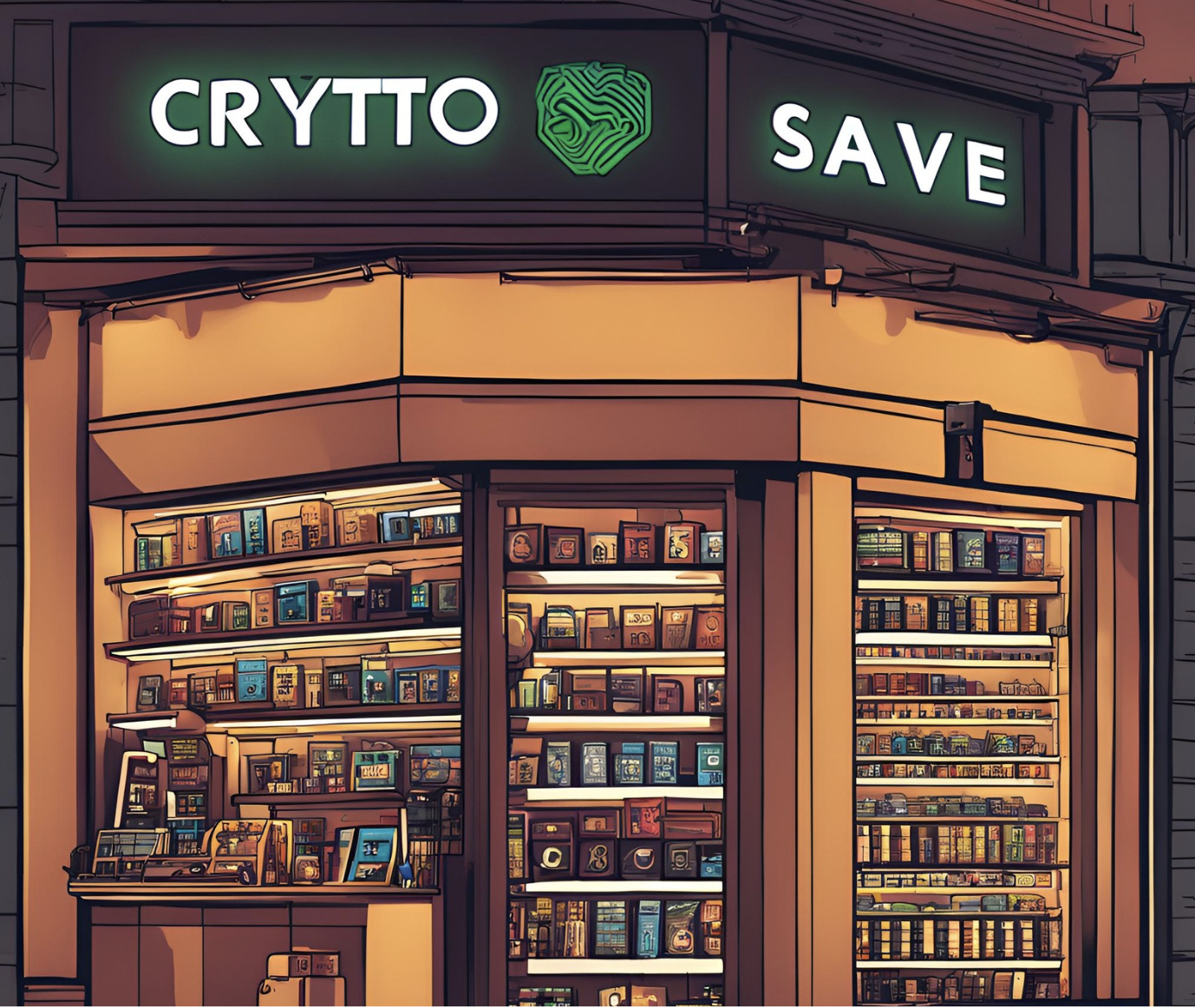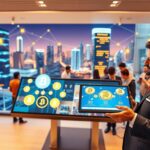Now Reading: Exploring NFTs for Art Collectors: A New Frontier
- 01
Exploring NFTs for Art Collectors: A New Frontier
Exploring NFTs for Art Collectors: A New Frontier
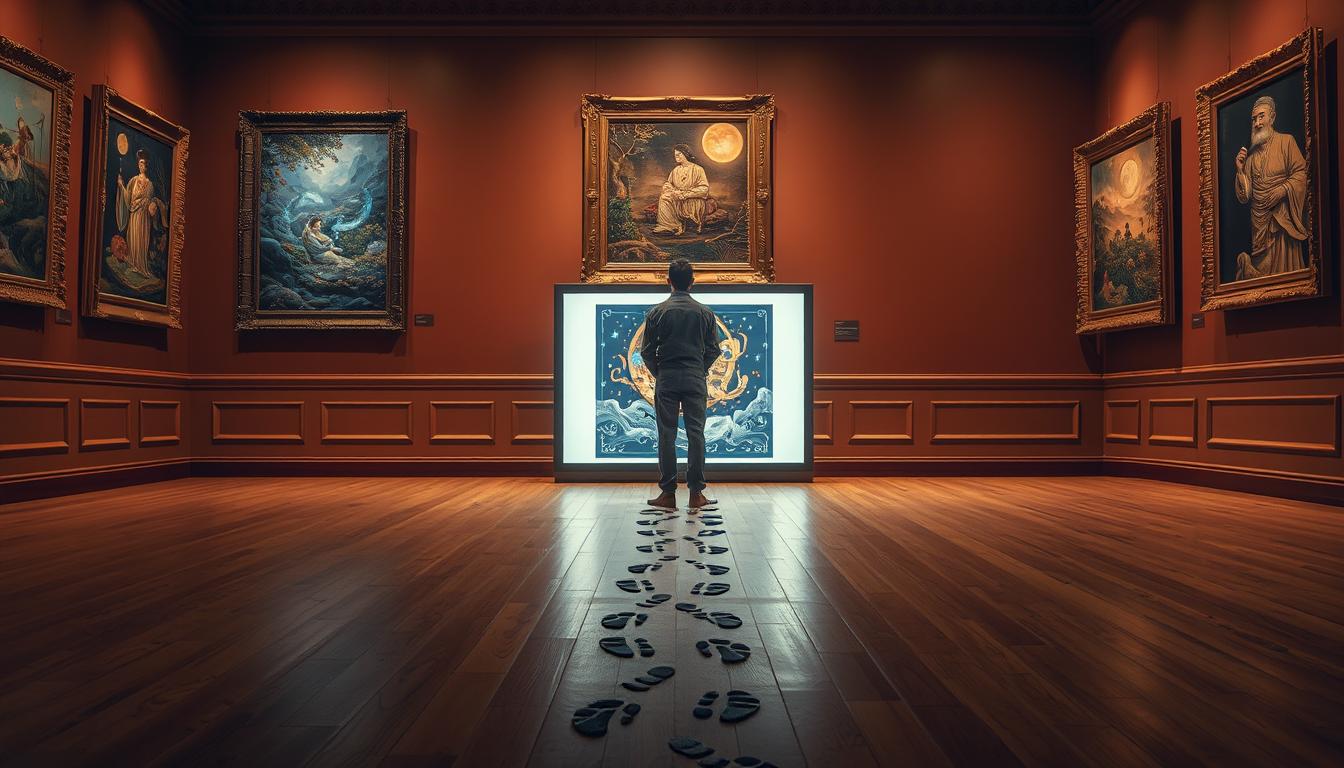
In the ever-evolving landscape of the art world, a new and captivating phenomenon has emerged – Non-Fungible Tokens (NFTs). These digital assets are rapidly transforming the way art collectors approach and engage with the art market. From the rise of digital art ownership to the impact of blockchain technology on the art industry, NFTs are redefining the very essence of art collecting.
This comprehensive guide will delve into the exciting world of NFTs for art collectors, exploring the unique value proposition they offer, the challenges they present, and the potential they hold for the future of the art market. Whether you’re a seasoned collector or new to the world of digital art, this article will provide you with a deep understanding of the transformative power of NFTs and the new frontier they’ve opened up for art enthusiasts.
Key Takeaways
- NFTs are revolutionizing the art world by enabling new forms of digital art ownership and investment.
- Blockchain technology is transforming the provenance and authenticity of digital art, providing collectors with a secure and transparent platform.
- The rise of crypto art is empowering artists to monetize their digital creations and connect directly with collectors.
- NFTs offer art collectors the opportunity to invest in digital scarcity, redefining the concept of art investment.
- As the NFT market continues to evolve, understanding the platforms, risks, and emerging trends is crucial for art collectors navigating this new frontier.
What are NFTs for Art Collectors?
The world of digital art ownership has been revolutionized by the emergence of non-fungible tokens, or NFTs. These unique digital assets are transforming the way art collectors engage with and acquire their prized works.
Understanding Non-Fungible Tokens
At their core, NFTs are cryptographic tokens that represent ownership of a unique digital item. Unlike fungible assets like cryptocurrencies, each NFT is one-of-a-kind, making them ideal for representing digital art, collectibles, and other digital assets. This non-fungibility ensures that each NFT has its own distinct value and history, providing art collectors with a verifiable proof of ownership and authenticity.
The Rise of Digital Art Ownership
The rise of digital art ownership has been fueled by the increasing popularity of blockchain art and crypto art. These digital artworks, which exist solely in the digital realm, are now being traded and collected just like traditional physical art. NFTs have become the backbone of this new digital art economy, allowing collectors to securely own and trade these virtual masterpieces.
| Feature | Explanation |
|---|---|
| Uniqueness | Each NFT is a unique digital asset, providing art collectors with a verifiable proof of ownership. |
| Authenticity | The blockchain technology behind NFTs ensures the authenticity and provenance of digital artworks. |
| Scarcity | NFTs can be programmed to have a limited supply, creating a sense of digital scarcity and increasing their value. |
“NFTs are revolutionizing the way we think about digital ownership and the art world as a whole.”
NFTs and the Art Market
The rise of non-fungible tokens (NFTs) has had a profound impact on the traditional art market. NFTs are disrupting the way art is purchased, traded, and authenticated, creating new opportunities for artists, collectors, and investors alike.
One of the key ways NFTs are transforming the art market is through the concept of digital scarcity. Unlike physical artworks, digital art can be easily replicated and shared online. However, NFTs provide a way to establish digital ownership and authenticity, making each piece truly unique and valuable. This has opened up new avenues for artists to monetize their digital creations and reach a global audience.
| Traditional Art Market | NFT Art Market |
|---|---|
| Reliance on galleries, auction houses, and intermediaries | Direct artist-to-collector transactions, bypassing traditional gatekeepers |
| Certificates of authenticity and physical provenance | Blockchain-based digital provenance and ownership |
| Limited edition physical artworks | Unique digital artworks with scarcity |
| Slow and opaque trading processes | Faster, more transparent, and global trading opportunities |
The art market is also benefiting from the increased liquidity and accessibility that NFTs bring. Collectors can now buy, sell, and trade crypto art on various online platforms, often with lower barriers to entry and greater price transparency. This has opened up the art investment landscape, attracting a new generation of collectors who are drawn to the digital nature and investment potential of NFTs.
“NFTs have the potential to revolutionize the art market by providing a secure and transparent way to authenticate and trade digital art. This is a game-changer for artists and collectors alike.”
As the art market continues to evolve, it’s clear that NFTs will play a significant role in shaping the future of art ownership, investment, and the overall creative landscape.
Crypto Art: A Revolution in the Art World
The rise of crypto art has ushered in a new era for the art world, one that is intrinsically linked to the transformative power of blockchain technology. This digital revolution is redefining the way we think about art, ownership, and scarcity.
The Impact of Blockchain on Art
Blockchain, the underlying technology powering cryptocurrencies, has introduced a novel concept of digital scarcity. This means that digital artworks, or “crypto art,” can now be truly unique and verifiable, thanks to the immutable nature of blockchain. Each crypto art piece is a non-fungible token (NFT), with a distinct digital certificate of authenticity stored on the blockchain.
The blockchain-based art provenance provided by NFTs offers unprecedented transparency and security, allowing collectors to trace the complete ownership history of a digital artwork. This newfound digital scarcity and provenance have unlocked a world of opportunities for artists, collectors, and the art market as a whole.
- Artists can now create truly unique digital artworks that hold real value, empowering them to monetize their creativity in innovative ways.
- Collectors can invest in digital art with the confidence that their purchases are secure, verifiable, and hold their value over time.
- The art market is experiencing a paradigm shift, with crypto art gaining recognition as a legitimate and valuable asset class.
This blockchain-powered transformation is set to have a lasting impact on the art world, ushering in a new era of crypto art and redefining the very concept of art ownership and investment.
“Crypto art is not just a passing trend; it’s a fundamental shift in the way we create, distribute, and collect art. The blockchain is revolutionizing the art world, and we’re only just beginning to scratch the surface of its potential.”
Non-Fungible Tokens: Redefining Art Investment
In the ever-evolving world of art, the emergence of non-fungible tokens (NFTs) is rewriting the rules of art investment. These unique digital assets are revolutionizing the way collectors approach the art market, introducing a new era of digital scarcity that is reshaping the perceived value of art.
The Value of Digital Scarcity
Traditionally, the value of art has been largely tied to its physical form and the perceived rarity of the work. However, the rise of NFTs challenges this notion by creating digital scarcity. Each NFT is a unique, verifiable, and indivisible digital asset, offering collectors the opportunity to own a one-of-a-kind piece of digital art. This digital scarcity, coupled with the transparency and security of blockchain technology, has led to a surge in the art investment potential of NFTs.
The art collectibles market has evolved, with digital art pieces now commanding significant value. As collectors seek to diversify their portfolios and embrace the digital age, NFTs have become a new frontier for art investment, offering a unique opportunity to own and potentially profit from digital artwork.
“NFTs have the potential to transform the art world, allowing digital artists to generate scarcity and value for their creations in ways that were previously impossible.”
The value of digital scarcity inherent in NFTs has captured the attention of both seasoned art collectors and newcomers to the art market. As the art investment landscape continues to evolve, NFTs are poised to redefine the way we perceive and value art, opening up new avenues for collectors to explore the intersection of technology, creativity, and investment.
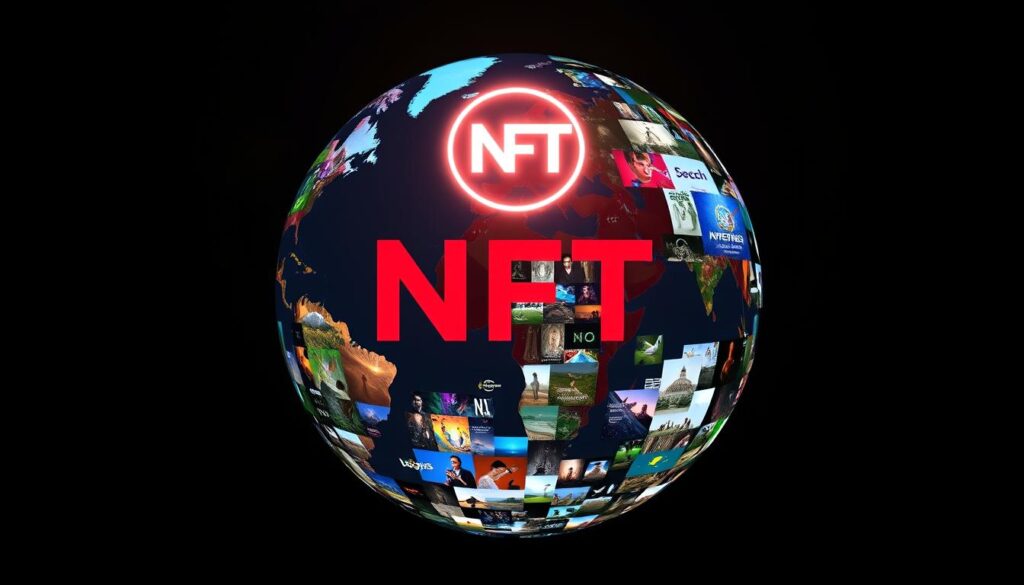
NFTs for Art Collectors: A New Frontier
The world of art collecting is on the brink of a transformative shift, thanks to the rise of non-fungible tokens (NFTs). These unique digital assets are opening up a new frontier for art enthusiasts, providing them with innovative ways to authenticate, acquire, and display their prized art collectibles.
NFTs have revolutionized the art market by offering collectors a secure and transparent means of verifying the ownership and provenance of digital artworks. By leveraging blockchain technology, NFTs can serve as digital certificates of authenticity, ensuring that the art you purchase is truly one-of-a-kind.
One of the key advantages of NFTs for art collectors is the ability to easily trade and display their digital art. NFT marketplaces have emerged as vibrant online platforms where collectors can buy, sell, and showcase their NFT-based art collectibles. This has opened up a new era of accessibility and liquidity in the art world, empowering collectors to actively participate in the digital art ecosystem.
Moreover, the concept of digital scarcity inherent in NFTs has transformed the way we perceive and value art. By ensuring the uniqueness of digital artworks, NFTs have elevated the status of digital art, making it a highly sought-after asset class for discerning collectors.
As the adoption of NFTs continues to grow, art collectors are embracing this new frontier, recognizing the immense potential it holds for transforming the art collecting experience. From verifying ownership to facilitating seamless trading, NFTs have the power to redefine the very foundations of the art market, paving the way for a more inclusive and dynamic art ecosystem.
The Provenance of Digital Art
In the rapidly evolving world of art, the concept of art provenance has taken on new significance with the rise of digital art and blockchain art. As the art world embraces the digital frontier, establishing a clear and immutable record of ownership and authenticity has become a critical challenge.
Non-Fungible Tokens (NFTs) have emerged as a game-changing solution, providing a digital means to track the provenance of digital artworks. By leveraging the power of blockchain technology, NFTs create a transparent and secure record of an artwork’s ownership history, from the artist’s creation to its subsequent transactions.
This digital provenance offers several key advantages for art collectors and enthusiasts:
- Authenticity Verification: NFTs enable the verification of an artwork’s authenticity, ensuring that collectors can confidently purchase digital art with a clear record of its origin and history.
- Transparent Ownership: The blockchain-based record of digital art ownership provides a transparent and tamper-proof ledger, eliminating the risks associated with forged or disputed ownership claims.
- Traceability: The provenance of an NFT-backed digital artwork can be traced back to its initial creation, allowing collectors to understand the artwork’s journey and its potential future value.
By harnessing the power of blockchain technology, the art provenance of digital artworks has become a robust and reliable means of establishing authenticity and ownership, paving the way for a new era of digital art collecting.
“NFTs have the potential to revolutionize the art market by providing a transparent and secure way to track the provenance of digital artworks.”
Collecting and Trading NFTs
Navigating the world of non-fungible tokens (NFTs) can be an exciting yet complex endeavor for art collectors. As this revolutionary technology continues to transform the art market, understanding the platforms and tools available for collecting and trading NFTs has become increasingly crucial.
Platforms for Art NFTs
The art NFT landscape is bustling with a variety of platforms and marketplaces that cater to the needs of collectors and investors. Some of the leading platforms for acquiring and trading art-related NFTs include:
- OpenSea – One of the largest and most popular NFT marketplaces, offering a wide selection of art, collectibles, and other digital assets.
- SuperRare – A curated platform that focuses on high-quality, limited-edition digital artworks from established and emerging artists.
- Nifty Gateway – A user-friendly platform that offers a diverse range of NFT art, including limited-edition drops and exclusive collaborations.
- Rarible – A decentralized marketplace that allows artists and creators to mint and sell their own NFTs.
| Platform | Specialty | Notable Features |
|---|---|---|
| OpenSea | General NFT Marketplace | Vast selection, high liquidity |
| SuperRare | Curated Digital Art | High-quality, limited editions |
| Nifty Gateway | Exclusive NFT Drops | User-friendly, celebrity collaborations |
| Rarible | Decentralized Marketplace | Creator-centric, community-driven |
These platforms offer a range of features and specialties, providing art collectors with a diverse array of opportunities to explore the world of art collectibles and art investment through platforms for art NFTs.
Risks and Challenges of NFT Art Collecting
While the world of digital art ownership through non-fungible tokens (NFTs) presents exciting opportunities for art collectors, it also comes with its fair share of risks and challenges. As this emerging market continues to evolve, it’s crucial for collectors to be aware of the potential pitfalls and navigate them with caution.
One of the primary concerns in the art investment arena is the inherent volatility of the NFT market. Prices for digital artwork can fluctuate rapidly, leaving collectors vulnerable to significant financial losses. This volatility is further exacerbated by the speculative nature of the NFT market, where the value of a piece is often driven by hype and sentiment rather than intrinsic artistic merit.
Another key challenge is the legal and regulatory uncertainty surrounding digital art ownership. As the NFT ecosystem continues to mature, the legal framework governing issues like intellectual property rights, ownership transfer, and taxation remains murky. This can expose collectors to potential legal risks and complications, particularly when dealing with cross-border transactions.
Additionally, the risks of NFTs extend beyond financial and legal concerns. The environmental impact of the blockchain technology underlying NFTs has come under scrutiny, with critics highlighting the significant energy consumption and carbon footprint associated with the minting and trading of these digital assets.
To navigate these risks and challenges, art collectors must exercise due diligence, research thoroughly, and seek professional guidance when venturing into the world of NFT art. By understanding the market dynamics, legal implications, and environmental considerations, they can make informed decisions and mitigate potential pitfalls.
| Risk | Description |
|---|---|
| Market Volatility | Rapid fluctuations in NFT prices can lead to significant financial losses for collectors. |
| Legal Uncertainty | Unclear legal frameworks surrounding intellectual property rights, ownership transfer, and taxation can expose collectors to legal risks. |
| Environmental Impact | The energy-intensive nature of blockchain technology used in NFTs can have a substantial environmental impact. |

“As the NFT ecosystem continues to mature, the legal framework governing issues like intellectual property rights, ownership transfer, and taxation remains murky.”
The Future of NFTs in the Art World
As the world of non-fungible tokens (NFTs) continues to evolve, the future of NFTs in the art world is brimming with exciting possibilities. From the integration of NFTs with traditional art institutions to the emergence of new business models, the landscape of digital art investment is poised for remarkable transformation.
Emerging Trends and Opportunities
One of the most significant emerging trends in the NFT art space is the increasing collaboration between digital artists and established art galleries and museums. This integration allows for the seamless integration of NFTs into the traditional art world, providing collectors with a sense of legitimacy and authenticity.
Furthermore, the future of NFTs in the art world also encompasses the potential for new business models. As the digital art market continues to mature, we may see the rise of NFT-based art funds, allowing investors to diversify their art portfolios and capitalize on the emerging trends in NFTs.
Another exciting development in the art investment landscape is the evolution of NFT-powered platforms that offer comprehensive solutions for artists, collectors, and galleries. These platforms provide secure and transparent marketplaces, as well as tools for managing digital art ownership, provenance, and resale.
“The future of NFTs in the art world is not just about the technology itself, but the potential it holds to redefine the way we think about art, ownership, and investment.”
As the future of NFTs in the art world continues to unfold, it is clear that the integration of this transformative technology will have far-reaching implications for the industry. From new business models to enhanced collaboration and transparency, the emerging trends in NFTs are set to leave an indelible mark on the art investment landscape.
Navigating the World of NFT Art
The world of art collectibles and digital art ownership has been revolutionized by the advent of non-fungible tokens (NFTs). As the popularity of NFTs grows, art collectors are presented with a new frontier to explore. Navigating this dynamic landscape can be both exciting and daunting, but with the right guidance, art enthusiasts can make informed decisions and build a thriving NFT art portfolio.
One of the key considerations for art collectors delving into the NFT space is identifying reputable platforms for art NFTs. These platforms serve as the gateways to the digital art world, offering a wide range of verified and authenticated digital artworks. Researching the reputations, security measures, and transaction processes of these platforms is crucial to ensuring the authenticity and value of the art collectibles you acquire.
Evaluating the authenticity and value of digital artworks is another critical aspect of navigating the NFT art world. Unlike traditional art, where provenance and physical attributes play a significant role, digital art ownership relies heavily on the blockchain technology that underpins NFTs. Understanding the metadata, smart contracts, and ownership records associated with a particular digital artwork can help art collectors make informed decisions about its true worth.
Building a diverse NFT art portfolio is another important consideration for art collectors. By diversifying across different artists, genres, and platforms, collectors can mitigate risks and potentially maximize their returns. Developing a strategic approach to NFT art collecting, including setting budgets, conducting market research, and monitoring market trends, can help art enthusiasts navigate this new frontier with confidence.
| Platform | Reputation | Verification Process | Transaction Fees |
|---|---|---|---|
| OpenSea | Established and widely recognized | Rigorous vetting of digital artworks | Varies, typically 2.5% of the sale price |
| SuperRare | Highly curated, focused on high-quality digital art | Selective artist application process | 15% of the sale price |
| Nifty Gateway | Backed by Gemini, known for exclusive drops | Partnerships with renowned artists | Varies, can be higher than industry average |
By navigating the world of NFT art with a well-informed and strategic approach, art collectors can unlock new opportunities for digital art ownership and diversify their portfolios in exciting ways. As the NFT ecosystem continues to evolve, staying up-to-date with the latest trends and best practices will be essential for art enthusiasts to thrive in this dynamic and rapidly-changing landscape.

Legal and Regulatory Considerations
As the exciting world of NFTs continues to revolutionize the art market, it’s crucial for collectors to understand the legal and regulatory landscape surrounding these digital assets. From intellectual property rights to tax implications, navigating the complex world of NFTs requires keen awareness and diligence.
Intellectual Property and NFTs
One of the primary legal considerations when dealing with NFTs is the issue of intellectual property (IP) rights. NFTs are unique digital certificates that represent ownership of a specific asset, often a work of digital art. However, the underlying intellectual property, such as the artwork or content, may not always be owned by the NFT holder. It’s essential for collectors to carefully review the terms and conditions of any NFT purchase to ensure they understand the IP rights associated with the asset.
Creators of digital art must also be mindful of their intellectual property rights when minting NFTs. Proper licensing and attribution are crucial to protect the creator’s rights and ensure a fair and transparent marketplace.
| Consideration | Explanation |
|---|---|
| IP Ownership | Understand the intellectual property rights associated with the NFT, as the holder may not own the underlying content. |
| Licensing and Attribution | Creators must ensure their work is properly licensed and attributed when minting NFTs to protect their intellectual property. |
| Resale Rights | NFT holders may have limited or no resale rights, depending on the terms of the original purchase. |
As the NFT market continues to evolve, regulatory bodies are also working to establish guidelines and frameworks to protect both creators and collectors. Staying informed about these legal considerations is crucial for anyone interested in the exciting world of digital art and NFT collecting.
The Environmental Impact of NFTs
As the world becomes increasingly digital, the environmental impact of emerging technologies like non-fungible tokens (NFTs) has come under scrutiny. The energy-intensive nature of blockchain technology, which underpins the creation and trading of NFTs, has raised concerns about the sustainability of crypto art and the broader NFT ecosystem.
The mining process required to validate transactions on the blockchain consumes significant amounts of electricity, often generated through fossil fuels. This energy-intensive process contributes to increased greenhouse gas emissions, contributing to climate change. Additionally, the storage and distribution of NFTs on decentralized networks can also have a significant environmental footprint.
However, the NFT community and blockchain platforms are actively exploring more sustainable approaches to address these environmental concerns. Initiatives such as the use of renewable energy sources, the adoption of energy-efficient blockchain protocols, and the development of carbon-neutral NFT marketplaces are aimed at mitigating the environmental impact of NFTs. As the industry continues to evolve, it is crucial that the creators, collectors, and platforms work together to ensure the long-term sustainability of the NFT ecosystem and its impact on the environment.
FAQ
What are NFTs for Art Collectors?
NFTs, or Non-Fungible Tokens, are unique digital assets that are stored on a blockchain. They are transforming the art collecting landscape by enabling the ownership and authentication of digital artworks. NFTs provide art collectors with a new way to own and invest in digital art and collectibles.
How are NFTs disrupting the traditional art market?
NFTs are disrupting the traditional art market by introducing new models of art ownership, distribution, and authentication. Through the use of blockchain technology, NFTs create digital scarcity and verifiable provenance, which are addressing key challenges in the art world, such as counterfeiting and lack of transparency.
What is the impact of blockchain on the art world?
Blockchain technology is revolutionizing the art world by providing a secure and transparent system for the creation, distribution, and ownership of digital artworks. The immutable nature of blockchain records ensures the provenance of digital art, addressing issues of authenticity and ownership that have historically plagued the traditional art market.
What is the value of digital scarcity in the context of art collecting?
Digital scarcity, a key feature of NFTs, is transforming the way art collectors perceive value. By creating unique, verifiable digital artworks, NFTs challenge the notion that digital art is infinitely reproducible, allowing collectors to own and invest in one-of-a-kind digital assets.
What are the risks and challenges of NFT art collecting?
While NFTs present exciting opportunities for art collectors, there are also risks and challenges to consider. These include market volatility, legal concerns, environmental impact, and the potential for fraud or scams. Art collectors should carefully research and evaluate the risks before investing in NFT art.
What are the emerging trends and opportunities in the NFT art market?
The NFT art market is rapidly evolving, and there are several emerging trends and opportunities for art collectors to explore. These include the integration of NFTs with traditional art institutions, the development of new business models, and the continued growth of the digital art market.
How can art collectors navigate the world of NFT art?
To successfully navigate the world of NFT art, collectors should familiarize themselves with reputable platforms for buying, selling, and displaying digital artworks. They should also develop a strategy for evaluating the authenticity and value of NFT art, and consider building a diverse portfolio of digital art collectibles.
What are the legal and regulatory considerations for NFT art collecting?
As the NFT art market continues to evolve, it’s important for collectors to understand the legal and regulatory landscape. This includes considerations around intellectual property rights, tax implications, and emerging regulations that may impact the ownership and trading of NFT art.
What is the environmental impact of NFTs?
The energy-intensive nature of blockchain technology used in NFTs has raised concerns about the environmental impact of the NFT art market. However, there are efforts underway to address these concerns, including the development of more sustainable approaches to NFT creation and trading.



